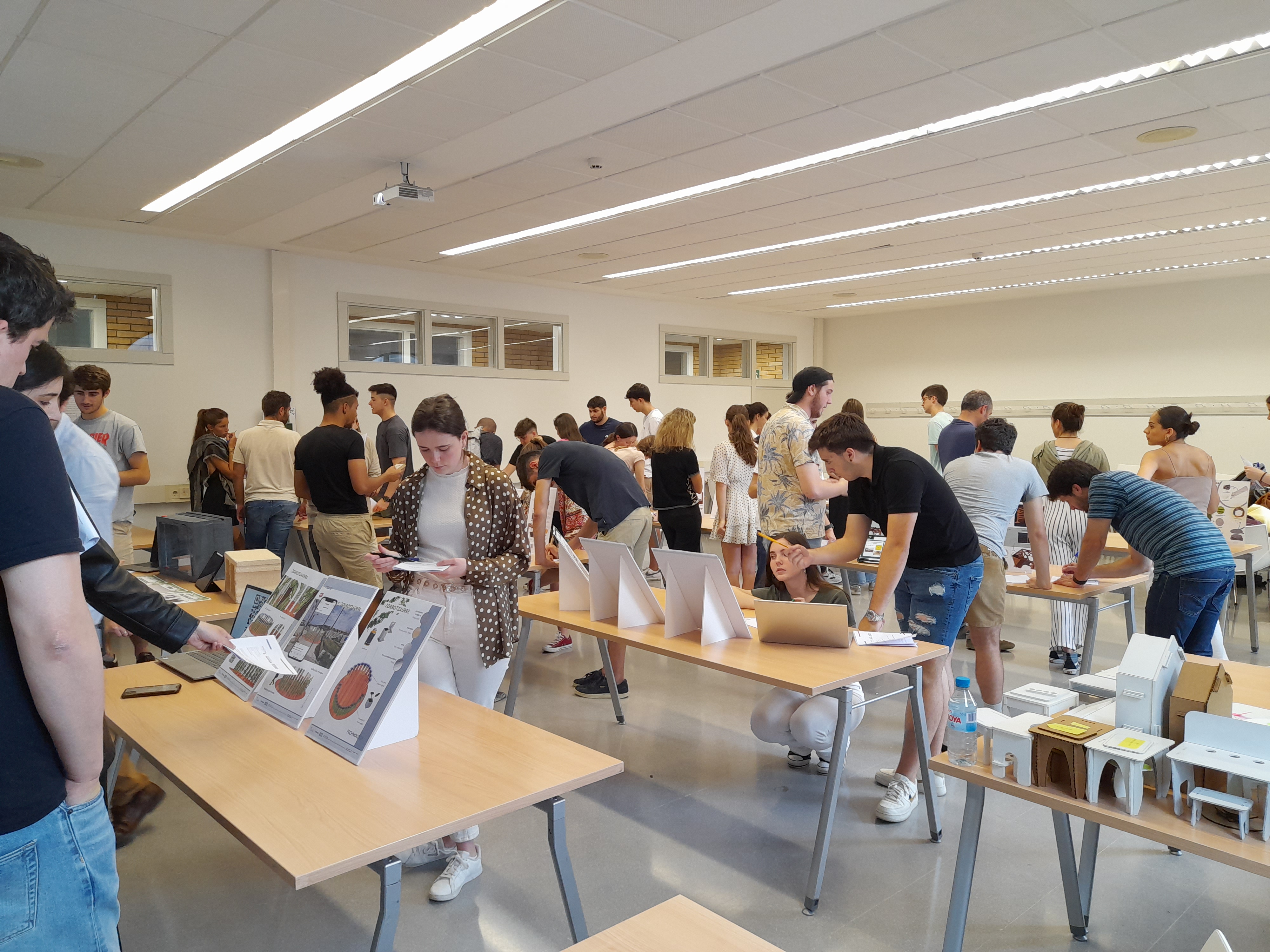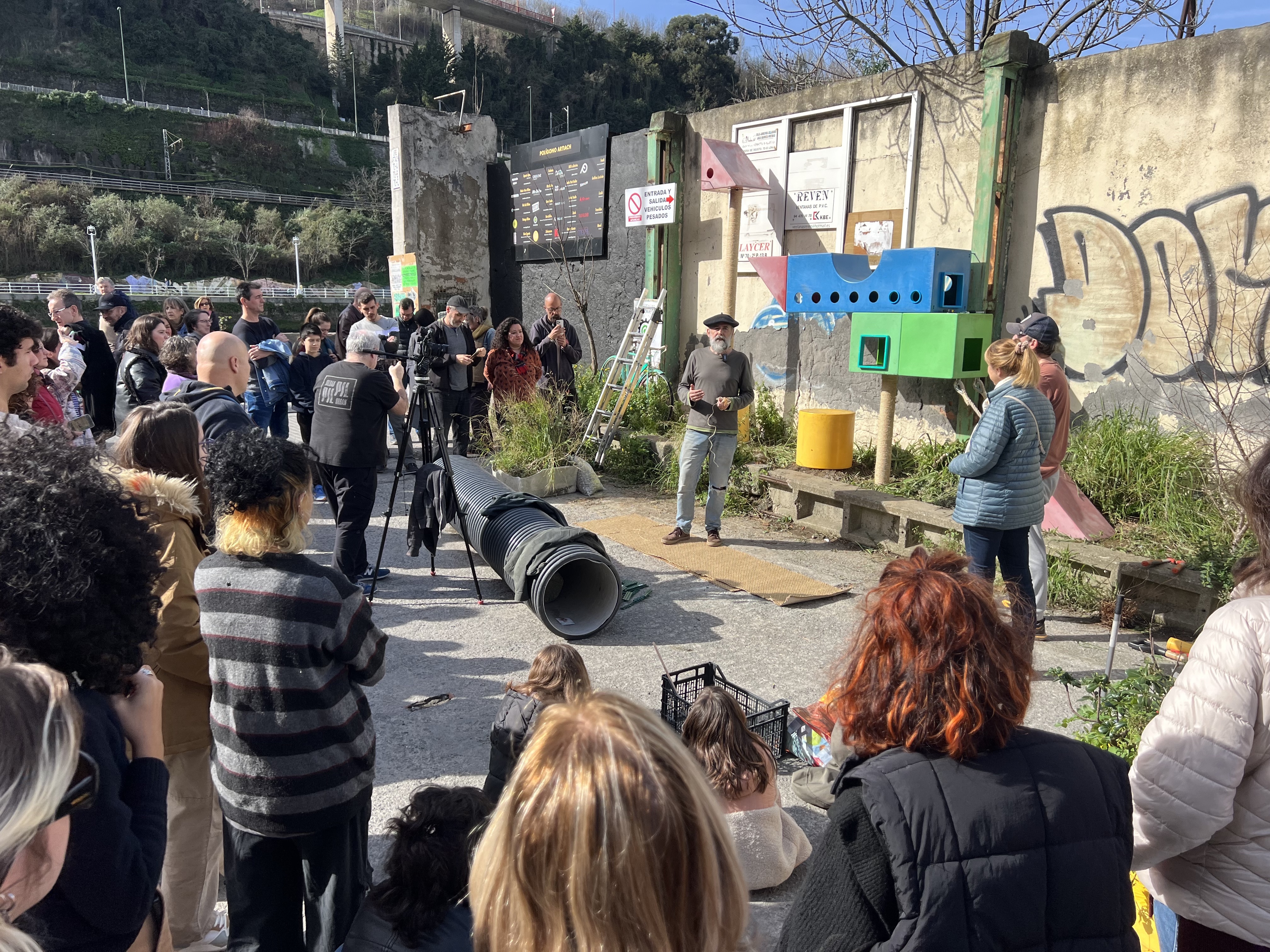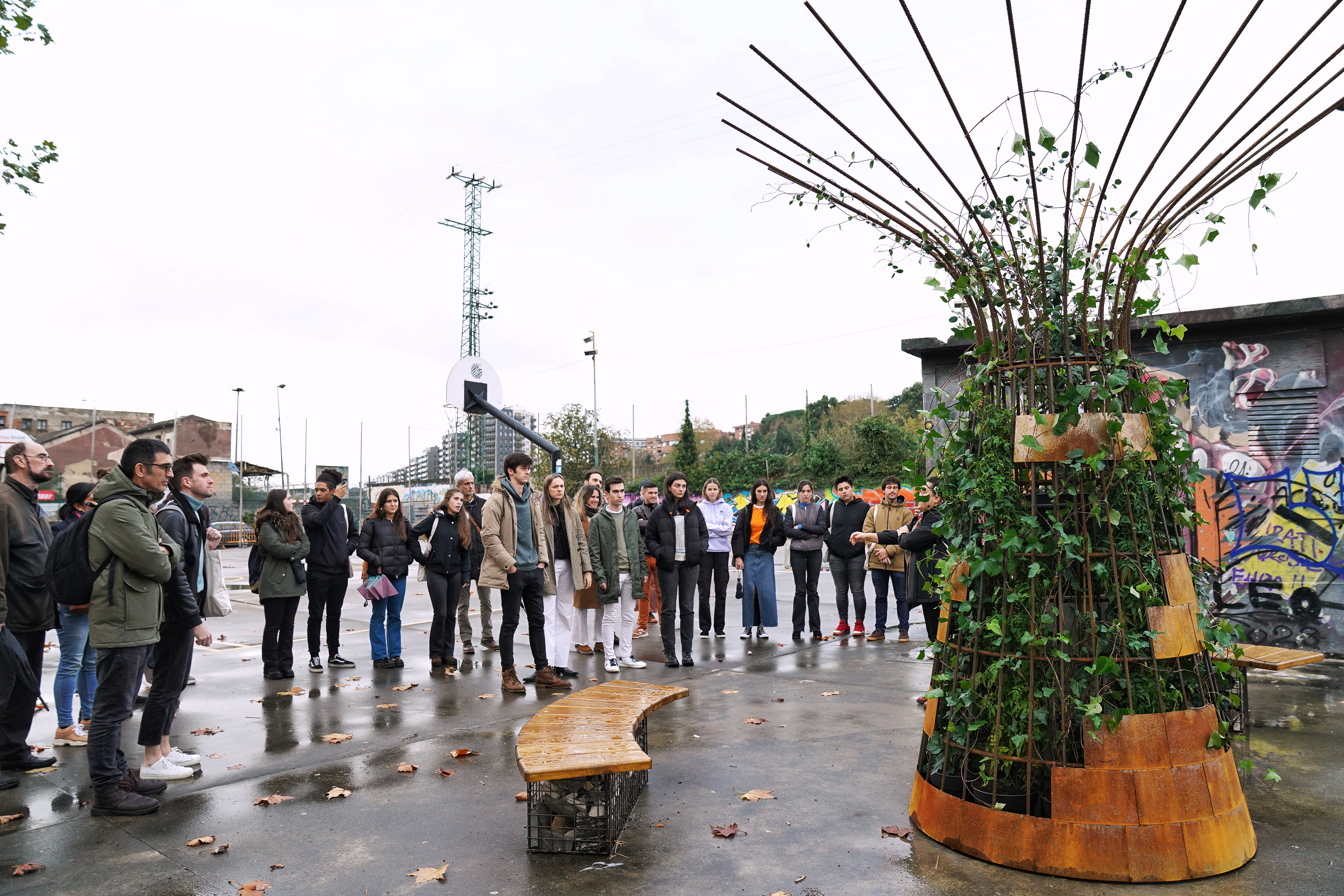The T-Factor project in Bilbao aims to explore how innovative academic curricula can strengthen partnerships between Higher Education Institutions (HEI) and cultural and creative initiatives. It is a European project that contributes to an inclusive and sustainable urban regeneration through civic engagement, where HEIs have been shown to play a crucial role. In this case, the article focuses on the prototype developed through an agreement of collaboration with the University of Deusto (UD) for the advancement of an innovative curriculum. This curriculum capacitated the students to design, develop and manufacture a temporary urban space in the island of Erribera-Zorrotzaurre, responding to the island's need to adapt to climate change.
The lessons learned from UD's experience could serve as a valuable resource for other higher education institutions and educational organisations seeking to develop their own curricula. For this reason, this article examines the innovative strategies adopted by T-Factor to promote collaboration between its students and stakeholders in the area. The focus of this article will be on the new practices of engagement with grassroots organisations fostered by this initiative and their implications for more sustainable practices.
The case of the University of Deusto in Bilbao Pilot
Urban development has a crucial role in helping cities adapt and become resilient to the global climate change crisis. To achieve this, urban planning must prioritise the increase of green and blue spaces and biodiversity. The island of Erribera-Zorrotzaurre, located at the northwest end of Bilbao and currently undergoing a major post-industrial regeneration, has incorporated such measures into its development plans.
The framework given to the students to tackle the issue was the one of Nature-Based Solutions (NBS), which offer a promising approach to complex urban adaptation. They were effective solutions for students at the University of Deusto, who were challenged to address climate change at the neighbourhood level. Their work aims to provide tailored responses to the ecological crisis, while addressing broader issues that affect the quality of life of the island's current inhabitants. Partners in this project were the University of Deusto, Bilbao Ekintza, Godot Studio, Technical University Dortmund, ANCI Toscana, and LAND.
The UD students carried out their activity in two rounds, each with different phases. The first was integrated in the subject "Methodology & Creativity" and had three phases.
1. Analysis (Sep. - Oct. 2022)
The course began with a presentation of T-Factor and the prototype brief, along with a co-designed training itinerary included in the subject to help students understand the scope of the activity.
The itinerary consisted of three lectures: one on projects such as T-Factor – illustrating their structure, rationale, goals and scope to address global complex and urban challenges; one on urban regeneration and temporary uses – explaining them as practical tools for urban development with a focus on the resilience of cities to climate change; and one on Nature-Based Solutions – showing them as nexuses of the urban, social and natural that create more sustainable, resilient and inclusive cities.
The inaugural event of the co-creation programme, which brought together students from the three local universities, took place in October and introduced the students to Zorrotzaurre and the Bilbao pilot of T-Factor.
2. Conceptualisation (Oct. - Nov. 2022)
The analysis phase served as a starting point for students to work with their tutors to develop an initial conceptualisation of project ideas, which were brought back to a workshop. The students brainstormed the prototypes in groups, including feedback between the different working groups, lecturers and T-Factor partners, as Godot Studio. The objective of this session was to mature the ideas enough to move to the next stage of the process.

3. Development (Dec. 2022 - Jan. 2023)
Before submitting the prototype proposals, it was necessary for the students to further develop the ideas to make them more effective. To this end, the students looked at communication – how they would be communicated –, usability – who would benefit from them and how –, and applied technology – what materials and technologies would be needed to construct them. After working on these aspects, the students presented their final proposals. Eleven different designs were presented through mock-ups and three explanatory panels. The outcome reached high levels of innovation, feasibility, sustainability and creativity.
The second round of activities was integrated into the subject 'User-centred design' and had five phases:
4. Second iteration of design (user-centred)
As a continuation of the activities carried out by staff and students in the first subject - Methodology & Creativity -, students, with the support of Godot Studio, met with their teachers to redefine needs and highlight a user-centred vision. This would lead them to create a solution that would face concrete problems and risks - with a particular focus on environmental and social issues, and more specifically, considering communities’ necessities of green and inclusive spaces.
The students worked in teams and had to consider the desirability, feasibility and viability of the proposals, adapting them to the budget and technical issues.
5. Creation
Students, lecturers, Zorrotzaurre's neighbours and T-Labs came together for a workshop where the final goal was to create mock-ups to visualise what the prototypes would look like.
Using an interest-matching technique, different groups were formed to work on the proposals, and each had a variety of materials to work with for the models. The co-creation process was successful and resulted in 11 mock-ups representing 11 different solutions to real needs. However, these models and ideas needed further development, which the students worked on after the workshop.
Once the projects had been refined, a presentation took place at the university, where the student groups showed their work to the lecturers, who gave them feedback to work on, before presenting the final proposals to a jury made up of a diverse group of participants in the co-creation process.
The jury's role was to evaluate all 11 project ideas and select the most suitable one, which would become the final selected prototype to continue work on.

6. Manufacturing
The manufacturing was carried out through collaboration between the University of Deusto, Godot Studio (design for additive manufacturing), and Petit Muller (interior design and artisan metalworkers). Students were involved and engaged throughout the whole process. UD, using its FabLabs, was involved in the construction of the seats/benches that accompany the structure. Petit Muller was involved in the fabrication of the metal structure of the chimney. Godot Studio supported the students throughout the process, clarifying any doubts and connecting them with the neighbourhood.


7. Exhibition
During the Bilbao T-Factor RoadShow Event, the three co-created spaces were presented by students to communicate what had been done and how the whole co-creation process worked. While explaining the objectives and the process, the students had the opportunity to show the community the final prototype, how it could be used and the idea behind it - what social and environmental benefits it would bring.
8. Activation Event
An activation event was organised for all the prototypes created by the Bilbao pilot of T-Factor: Erribera Zirkular Fest. The aim of this event was to promote circular economy and the creative use of public space - linking the discussion to the issues that the students were addressing. Erribera Zirkular Fest included different activities and workshops, and some spaces were presented to the community.
One example was the so-called "Ezinbestekoak", which was linked to the space created by the UD and consisted of an urban design to renaturalise the area – adapt it to climate change. In this case, the idea was to establish relationships based on respect between the community of neighbours and the cats that inhabit the island, as well as birds and insects. This initiative was designed by Abad Design, with the idea of not only focusing urban design on people, but also creating relationships with the non-human ecosystem. This renaturalisation served as a presentation to the neighbourhood, raising awareness, as well as strengthening ties with neighbours, as there are currently five of them taking care of the cats.

9. Testing
The test phase analysed how the co-created space worked and whether it was used by the community. In this sense, it was clear that the space serves as a meeting place, where people sit down - as there are few places to sit where it was located - and even residents bring tables and seats to use the space to hang out with friends. In fact, it is worth noting that the residents use the basketball courts where the prototype is located not only to play basketball, but also to organise activities such as the Anti-Racist League, a tournament where people from different backgrounds play basketball in defence of a more equal society, free of xenophobia.


